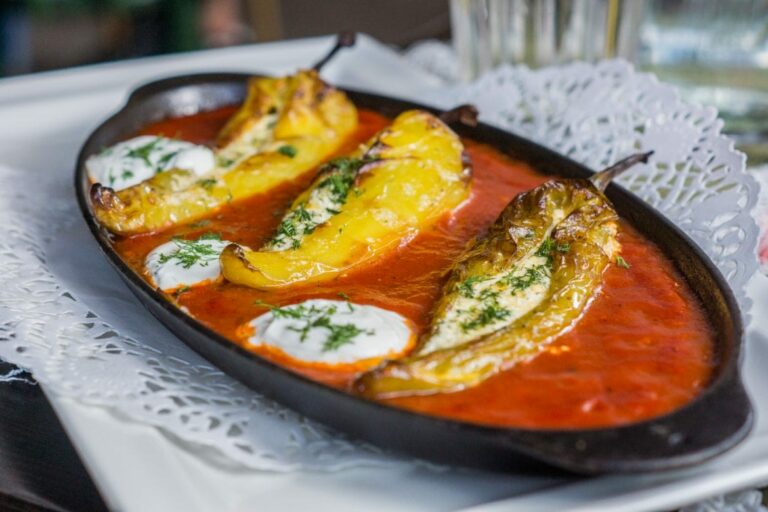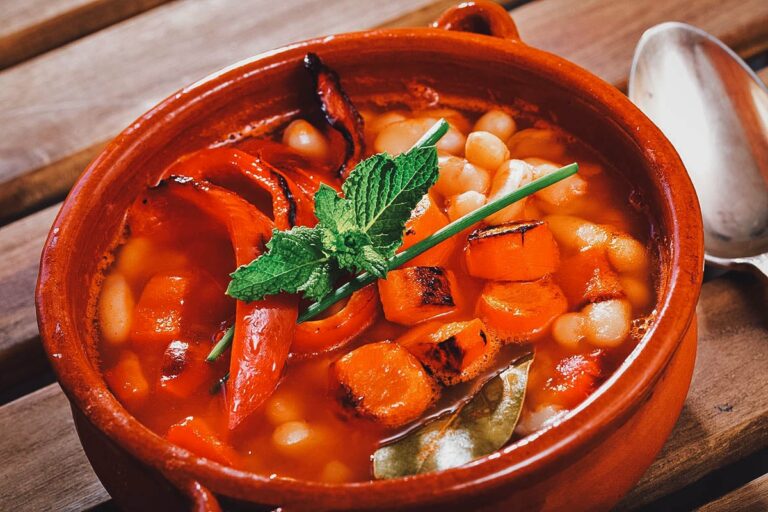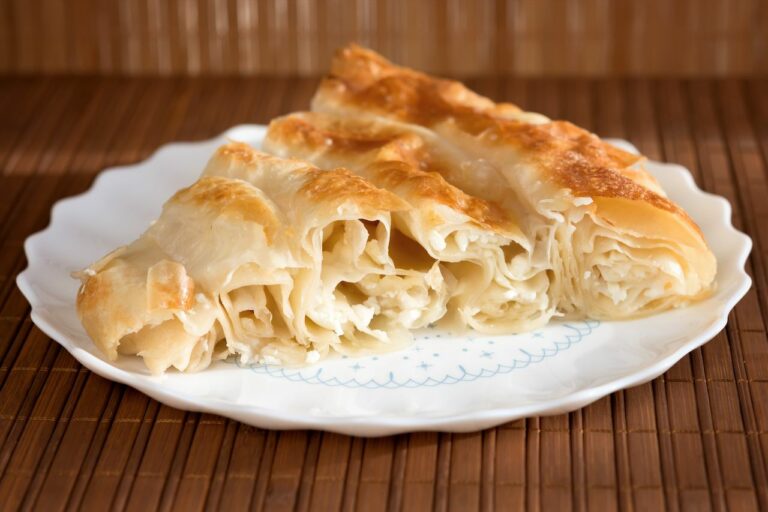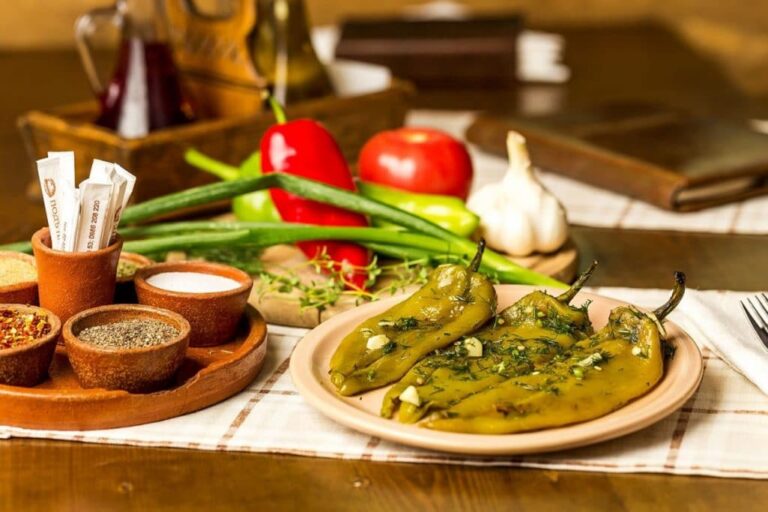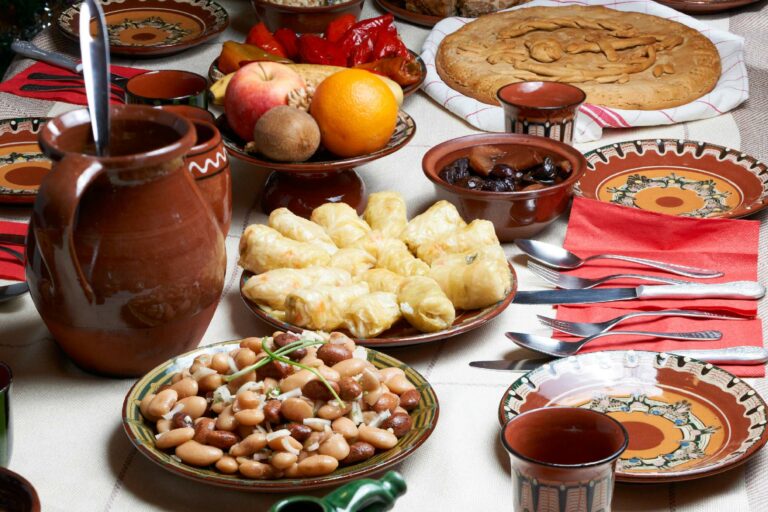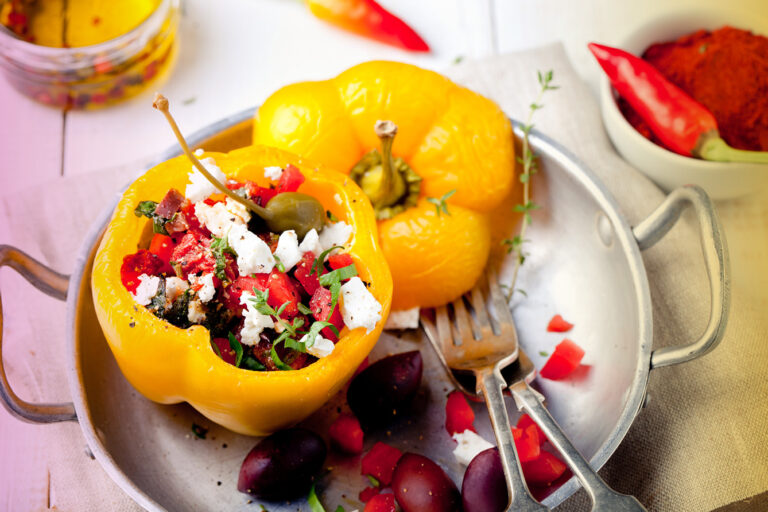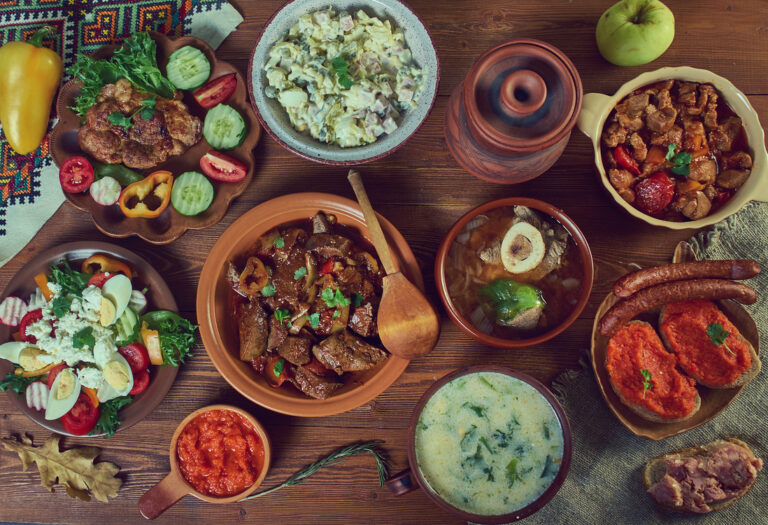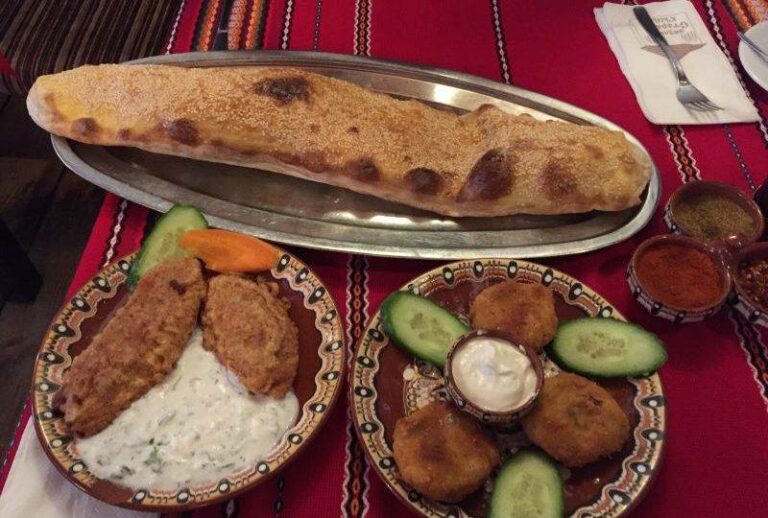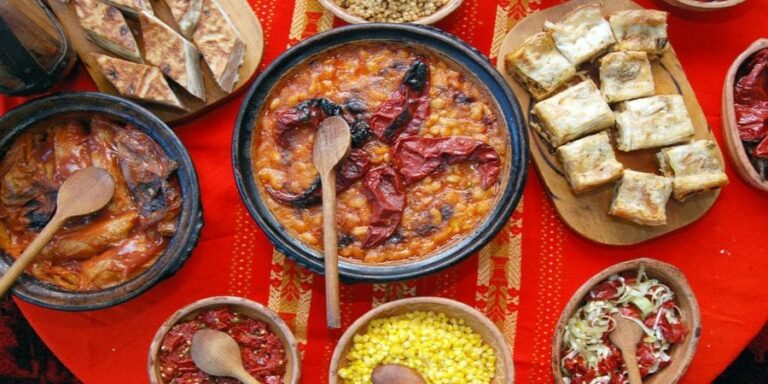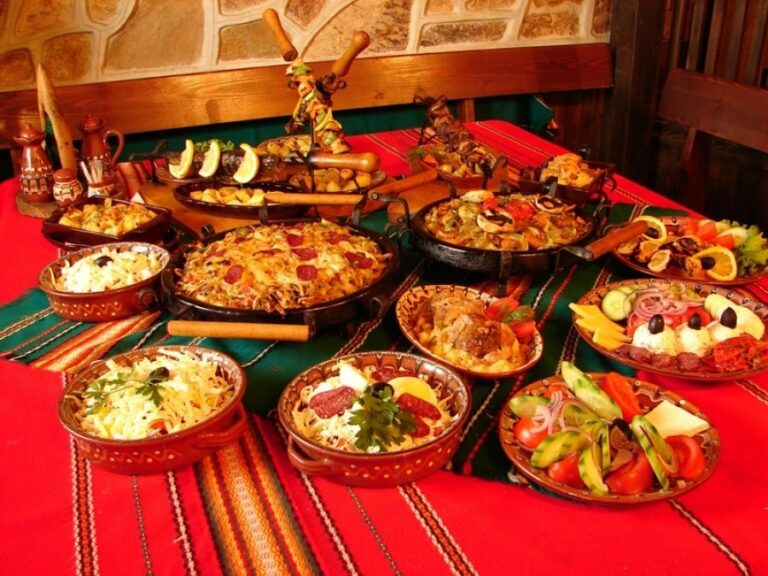Introduction: Bulgarian Cuisine
Bulgarian cuisine is a reflection of the country’s rich culture and diverse history. The food is hearty and flavorful, often featuring a combination of meat and vegetables. Meat dishes are particularly popular and play a significant role in Bulgarian cuisine. Bulgarians take great pride in their traditional recipes, which have been passed down through generations.
Grilled Skewered Meat: Kebapche
Kebapche is a Bulgarian meat dish that is similar to a grilled sausage. It is made with a combination of ground beef and pork, seasoned with garlic, pepper, and paprika. The meat mixture is then shaped into elongated tubes and grilled on skewers until crispy on the outside and juicy on the inside. Kebapche is typically served with a side of Bulgarian yogurt and a fresh salad.
Bulgarian-Style Meatballs: Kyufte
Kyufte is a traditional Bulgarian meatball that is made with a blend of ground beef and pork, along with onions, garlic, and a variety of spices. The mixture is formed into small balls and fried until crispy on the outside and tender on the inside. Kyufte is often served with a side of mashed potatoes or a fresh salad.
Pork Stew with Vegetables: Kapama
Kapama is a hearty pork stew that is typically cooked in a clay pot. The dish features a combination of pork, onions, carrots, and potatoes, all simmered together in a tomato-based sauce. Kapama is flavored with a variety of spices, including cinnamon, cloves, and bay leaves. The result is a rich and flavorful stew that is perfect for a cold winter evening.
Stuffed Cabbage Rolls: Sarmi
Sarmi is a traditional Bulgarian dish that consists of cabbage leaves stuffed with a mixture of ground beef and rice. The rolls are then cooked in a tomato-based sauce, which gives them a deliciously tangy flavor. Sarmi is often served as a main course, accompanied by a side of Bulgarian yogurt and a fresh salad.
Roasted Pork: Prase
Prase is a roasted pork dish that is typically served during special occasions and holidays. The pork is seasoned with a variety of spices, then slow-roasted until tender and juicy. Prase is often served with a side of sautéed potatoes and a fresh salad.
Lamb Stew with Okra: Gyuvech
Gyuvech is a hearty lamb stew that is typically cooked in a clay pot. The dish features a combination of lamb, okra, onions, and tomatoes, all simmered together in a flavorful broth. Gyuvech is often served with a side of bread or rice.
Meat and Vegetable Casserole: Kavarma
Kavarma is a meat and vegetable casserole that is typically made with a combination of pork, onions, peppers, and tomatoes. The dish is slow-cooked until the meat is tender and the vegetables are soft and flavorful. Kavarma is often served with a side of bread or mashed potatoes.
In conclusion, Bulgarian cuisine is rich in meat dishes that are flavorful, hearty, and perfect for a satisfying meal. Whether you’re a fan of grilled meat, stews, or casseroles, there’s something for everyone in Bulgarian cuisine.

